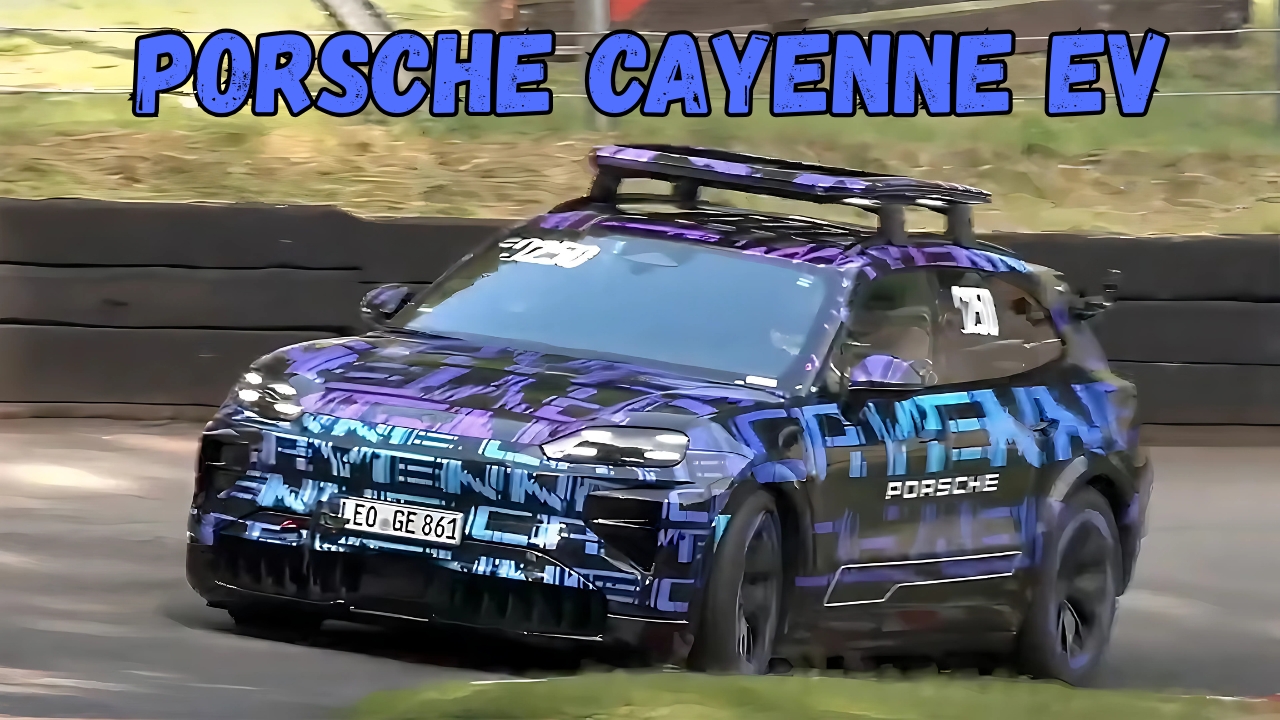The automotive world witnessed a stunning demonstration of electric performance when a prototype Porsche Cayenne EV shattered the SUV record at the historic Shelsley Walsh Hill Climb, completing the 1,000-yard course in just 31.28 seconds. This remarkable achievement came four seconds faster than the previous record held by a Bentley Bentayga W12, showcasing the instant torque advantages of electric powertrains.
Driven by Gabriela Jílková, simulator and development driver for the TAG Heuer Porsche Formula E Team, the camouflaged prototype navigated the challenging course with its steep 16.7% gradient and narrow 3.5-meter width. Most impressively, the electric SUV covered 60 feet from a standstill in just 1.94 seconds, a performance typically reserved for single-seat racing cars.
Technical Foundation and Platform Architecture
Premium Platform Electric (PPE) Foundation
The 2026 Cayenne EV is built on Porsche’s advanced Premium Platform Electric (PPE) architecture, featuring an 800-volt electrical system that ensures rapid charging capabilities and exceptional energy efficiency. This sophisticated platform, shared with the electric Macan and Audi’s Q6 e-tron and A6 e-tron models, represents a significant technological leap forward.
Thanks to the 800-volt PPE platform, the range for the 2026 Porsche Cayenne EV is expected to exceed 600 kilometers, positioning it competitively in the luxury electric SUV segment.
Powertrain Specifications and Performance
While exact specifications remain under wraps, the Cayenne EV will be equipped with dual permanently excited synchronous motors, one on each axle, with power output expected to exceed 600 horsepower. More ambitious estimates suggest the Cayenne EV S could produce over 750 horsepower, with some variants hinting at nearly 800 horsepower.
The most powerful variant could potentially deliver as much as 1,000 horsepower in its flagship configuration, which would position it as a direct competitor to Tesla’s Model X Plaid and other high-performance electric SUVs.
Launch Timeline and Market Strategy
2025 Debut and 2026 Market Entry
Porsche CEO Oliver Blume confirmed that the electric Cayenne will premiere late in 2025 during an event on the West Coast, with the vehicle expected to debut as a 2026 model.
Unlike some of Porsche’s other electric transitions, the gas-powered Cayenne will continue alongside the electric version, with both variants coexisting for many years. This dual-strategy approach allows Porsche to cater to different market segments while transitioning to electrification.
Trim Levels and Pricing Structure
The price of the 2026 Porsche Cayenne EV is expected to start around $80,000 and reach up to $120,000 depending on trim and options. The lineup will likely include a base model, an S trim, and a high-performance GTS variant.
Design Philosophy and Innovation
Evolutionary Aesthetics
The 2026 Cayenne’s design honors Porsche’s heritage while embracing the future, maintaining the distinctive silhouette that has defined the Cayenne while incorporating modern design elements that reflect its electric underpinnings. Recent spy shots reveal different variants in testing, with some featuring active aero flaps similar to those on the 911 GTS T-Hybrid.
Advanced Chassis Technology
Porsche Active Ride Suspension
The Porsche Active Ride suspension that debuted in the 2024 Panamera plug-in hybrid should be one of the chassis highlights of the Cayenne EV. This sophisticated system requires a high-performance power source and gets its required power directly from the traction battery pack.
The Active Ride suspension provides enormous stability and precision, keeping the body level even under heavy braking, steering, or acceleration.
Practical Capabilities and Versatility
Towing and Utility Performance
Despite its electric powertrain, the Cayenne EV maintains impressive practical capabilities. During testing, the prototype successfully towed a 100-year-old classic car and trailer weighing around 3 tons, with Porsche confirming that the Cayenne Electric will support a towing capacity of up to 7,716 pounds, matching the capability of its gas-powered counterpart.
Interior Technology and Comfort
The interior seamlessly blends luxury with cutting-edge technology, featuring high-quality materials, meticulous craftsmanship, and intuitive interfaces that cater to both driver and passengers. Advanced infotainment systems and customizable displays ensure occupants remain connected and entertained.
Market Positioning and Competition
Competitive Landscape
The Cayenne Electric will compete with the Tesla Model X, Mercedes EQS SUV, BMW iX, and Audi Q8 e-tron, positioning itself as a premium alternative in the luxury electric SUV segment.
Future Expansion Plans
Porsche is also working on a larger ultra-luxury electric SUV, codenamed “K1” internally, slated to launch in 2027, which will sit above the Cayenne EV in the lineup hierarchy.
A New Era of Electric Performance
The Porsche Cayenne EV represents more than just an electric conversion of a successful SUV; it embodies Porsche’s commitment to maintaining performance excellence while embracing sustainable mobility. With its record-breaking hill climb performance, advanced PPE platform, and substantial power output, the Cayenne EV is positioned to redefine expectations for electric luxury SUVs.
As the automotive industry continues its transition to electrification, Porsche’s approach with the Cayenne EV demonstrates that electric vehicles can deliver the same exhilarating performance that has defined the brand for decades, while adding the benefits of instant torque, silent operation, and zero local emissions.
Frequently Asked Questions
Q: When will the Porsche Cayenne EV be available? A: The Cayenne EV will debut in late 2025 as a 2026 model, with deliveries expected to begin in 2026.
Q: What is the expected range of the Cayenne EV? A: The Cayenne EV is expected to exceed 600 kilometers (373 miles) of range thanks to its 800-volt PPE platform.
Q: Will the gas-powered Cayenne be discontinued? A: No, Porsche confirmed that both electric and gas-powered Cayenne models will coexist for many years, likely into the 2030s.
